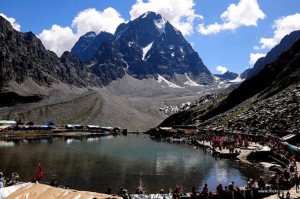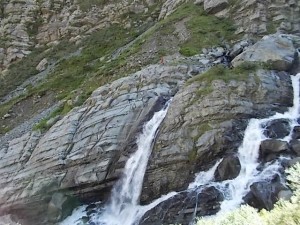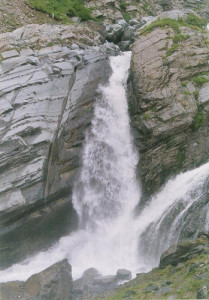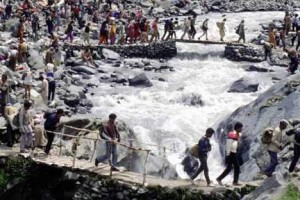The lake, of glacial origin, is in the upper reaches of the Ghoi nala, which is tributary of Budhil river, a tributary of the Ravi River in Himachal Pradesh. However, the lake is the source of a tributary of the Budhil River, known as Manimahesh Ganga.
The stream originates from the lake in the form of a fall at Dhanchoo. The mountain peak is a snow clad tribal glen of Bharmour in the Chamba district of Manimahesh range. The highest peak is the Mani Mahesh Kailash also called Chamba Kailash overlooking the lake. The lake, considered a glacial depression, is sourced by snow-melt Slot Online Bonus New Member waters from the surrounding hill slopes. Towards the end of June with ice beginning to melt, numerous small streams break up everywhere, which together with the lush green hills and the myriad of flowers give the place a truly remarkable view. The snow field at the base of the mountain is called by the local people as Shiva’s Chaugan Shiva’s playground. According to a belief, Lord Shiva stayed here with his consort Parvati.
Manimahesh is approached from three routes:
- Pilgrims from Lahaul and Spiti pass through Kugti pass.
- Pilgrims from Kangra and Mandi take the Karwarsi pass or Jalsu pass via Tyari village, near Holi inBharmour.
- The easiest and popular route is from Bharmour, Himachal Pradesh. The most popular is the Bharmour – Hadsar – Manimahesh route which involves a 13 KM (8 miles) track from Hadsar village to the Manimahesh Lake.
The highest altitude touched in this route is 4,115 meters (13,501 feet) and it takes two days (Because trek is very steep) with an overnight Slot Gacor Gampang Menang stay at Dhanchoo. Season to be undertaken is June to October and it has a gentle grade. The path leading to the lake is well maintained.
Half way up this track is 6 kilometres (3.7 miles) of open and flat meadow land to Dhanchoo. Tented accommodation is available here during August–September. Night halt is preferred here. Free kitchens are opened by people (Sewaks from Self Help Organisations) to feed pilgrims. But many prefer to go and pitch their tents next to the lake to feel a divine experience. En route, there is waterfall at Gauri nallah known as the Dhanchoo fall. From Dhanchoo, it is a steep climb. This track has seen lot of improvements over the years. In the past the first climb was first done by crossing Dhanchoo nallah. It was so tough that people used to crawl to get across. Since they used to crawl like a monkey in this stretch it was known as Bandar Ghati (monkey valley). Now this track is much improved and the newly constructed path is used. However, some still prefer to take the old route as an adventure and go through theBandar Ghati.
In the past, on the trek from Dhanchoo, the bridge over the Mani Mahesh river was crossed to reach the left bank of the valley. After 2KM (1.2 Miles), the river was again crossed, over another wooden bridge, to the right bank.
From this point, the climb passes through many zigzag paths along  flowered meadows. Birch trees are seen in the vicinity, which indicates a gain in altitude as the trek proceeds. Along this stretch of the trek route, there are a number community kitchens (eateries) at about 3,600 meters (11,800 ft) elevation. From this location, the trail toManimahesh Lake could be discerned. The waterfall, flowing from the lake, is also seen at this stage. A further trek of1.5 km (0.93 miles) through the grassy ridges leads to the Manimahesh Lake.
flowered meadows. Birch trees are seen in the vicinity, which indicates a gain in altitude as the trek proceeds. Along this stretch of the trek route, there are a number community kitchens (eateries) at about 3,600 meters (11,800 ft) elevation. From this location, the trail toManimahesh Lake could be discerned. The waterfall, flowing from the lake, is also seen at this stage. A further trek of1.5 km (0.93 miles) through the grassy ridges leads to the Manimahesh Lake.



